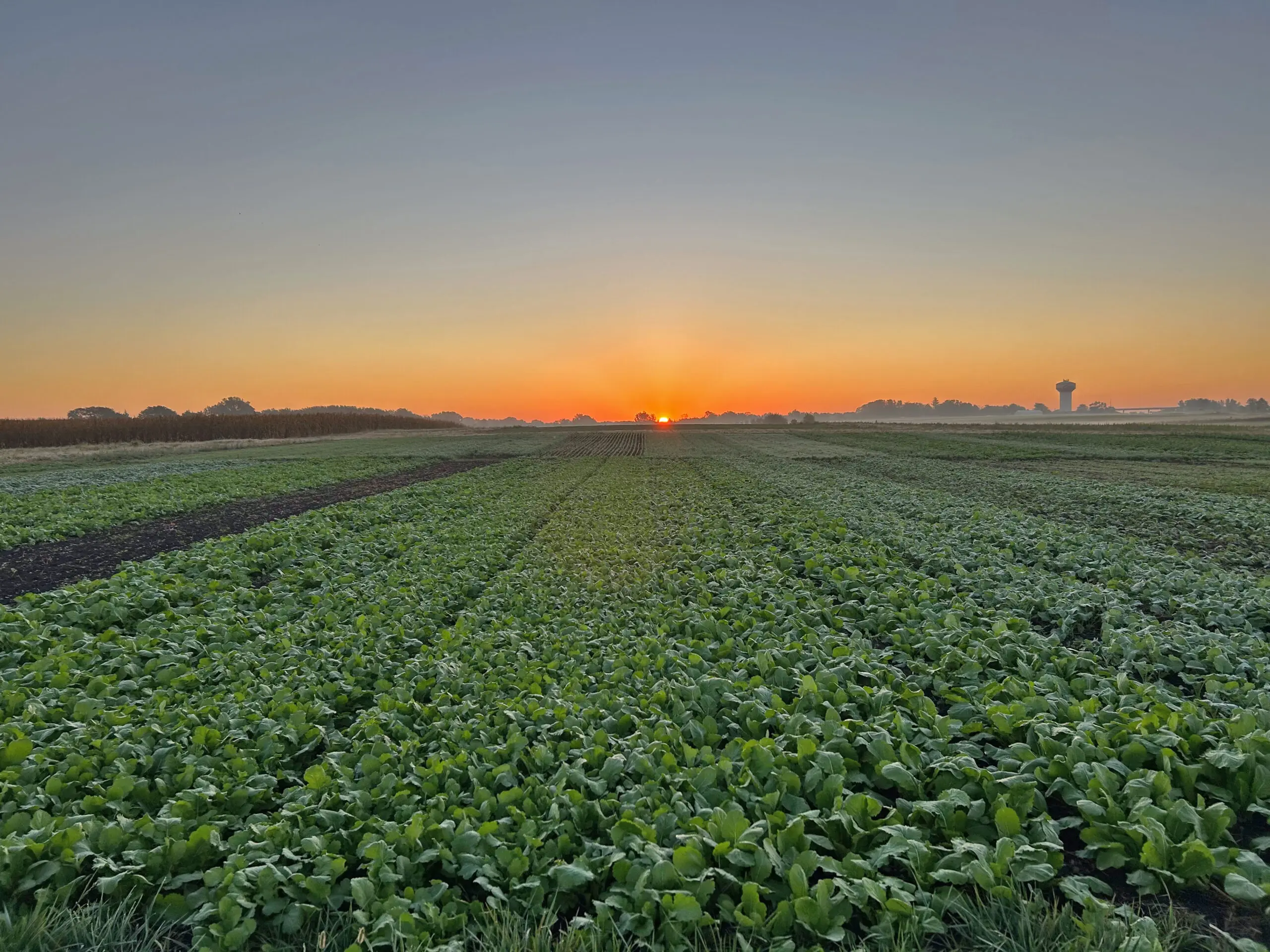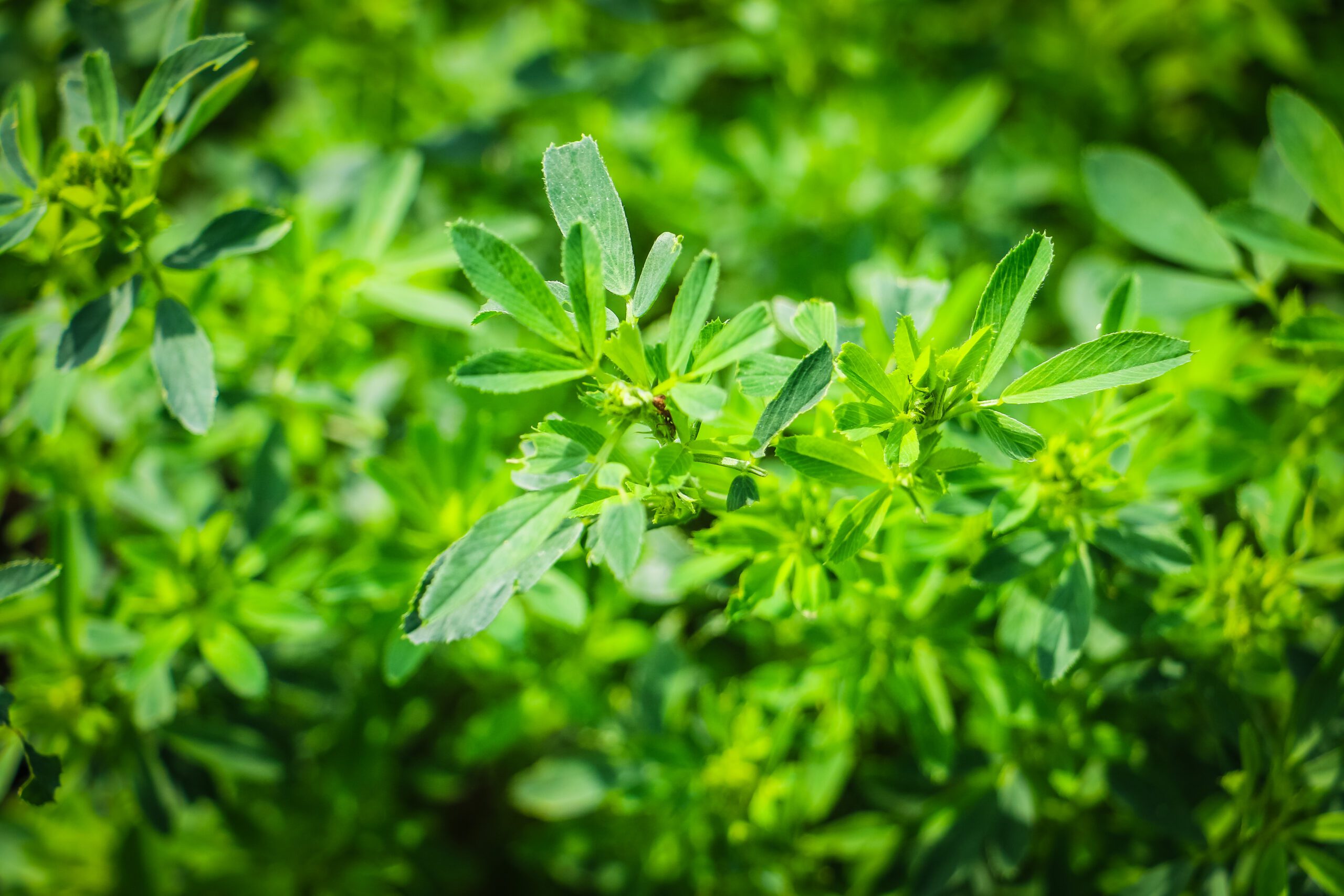By Margaret Smith, PhD
Albert Lea Seed Agronomist
I’ve taken a personal pledge to never again use the phrase “fall-seeded alfalfa” when speaking about the Upper Midwest and Northeastern U.S. Many folks still refer to fall seeding alfalfa, but this doesn’t fit the reality of the season and optimum seeding dates. ‘Late-summer seeding’ better captures the timeframe for seeding alfalfa and grass forages in the second half of the growing season.
In the Upper Midwest and Northeastern U.S., we seed the majority of our alfalfa and forage mixes in the spring. This makes good agronomic sense, as we usually have a steady supply of moisture in the spring season. But, late summer can also be an excellent time to seed alfalfa and forage mixes. The onset of fall is marked by the fall equinox, September 22, which is too late for successful perennial legume seedings in most years. In southern states—Arkansas, and east — planting in the ‘fall’ may be appropriate.
Established Recommendations for Late-Summer Seedings
Forage agronomists in the American Society of Agronomy have shared the preferred alfalfa and alfalfa/grass planting seasons (Fig. 1.). In southern states, seeding later in the growing season is preferred because it helps avoid hot and dry weather during the establishment period that can be experienced soon after spring seeding.
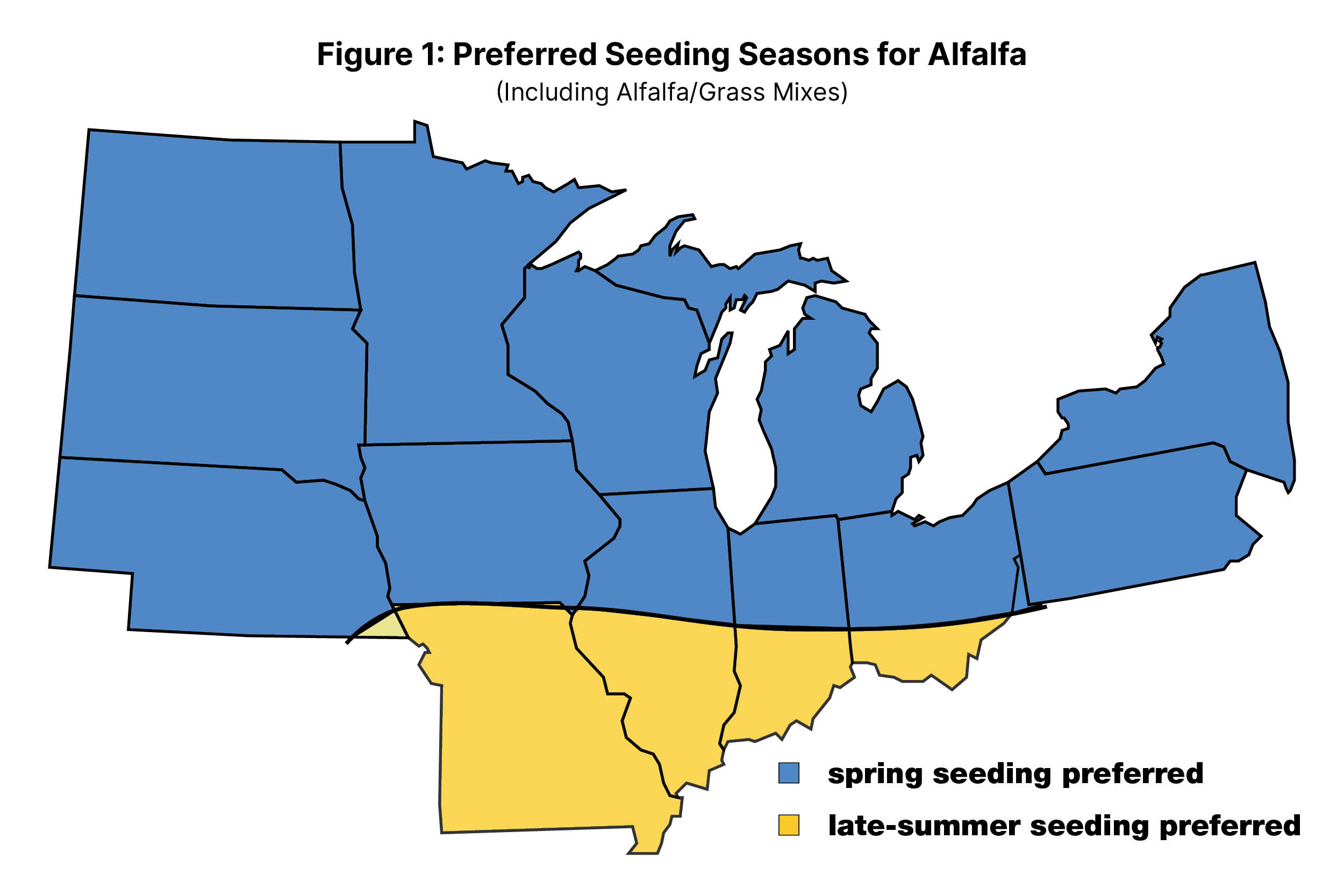
Source: Alfalfa Management Guide, ASA, UW, ISU, UMN
Why Plant Alfalfa, Grass, and Pasture in the Late Summer?
Though spring seeding predominates in the northern states, there are good reasons to plant in late summer. This planting window fits well in rotations that include wheat, barley, oats, rye, or canning crops. And, if a spring seeding fails due to disease, weeds, or adverse weather, you have a second chance that same year, perhaps following a warm-season grass for summer forage.
Advantages of late-summer seeding alfalfa include:
1. Alfalfa seedling diseases, sometimes experienced in wet, spring conditions are rarely a problem in the late summer.
2. Weeds and insects rarely limit stand establishment.
3. No companion crop is needed (in fact, it’s not recommended in the late-summer seeding window).
4. For conventional growers, no herbicide is needed.
5. Stands are nearly fully established by the time of first cutting the following spring.
Adapted from: Let the Alfalfa Seeding Begin, Mike Rankin, Hay and Forage Grower, 2020
Many land-grant universities established recommended ‘plant by’ dates for alfalfa in the second half of the growing season, relying on data from field planting–date studies (Fig. 2). This method, using multiple planting sites and planting dates over several years, is the gold standard for developing recommendations for farmers.
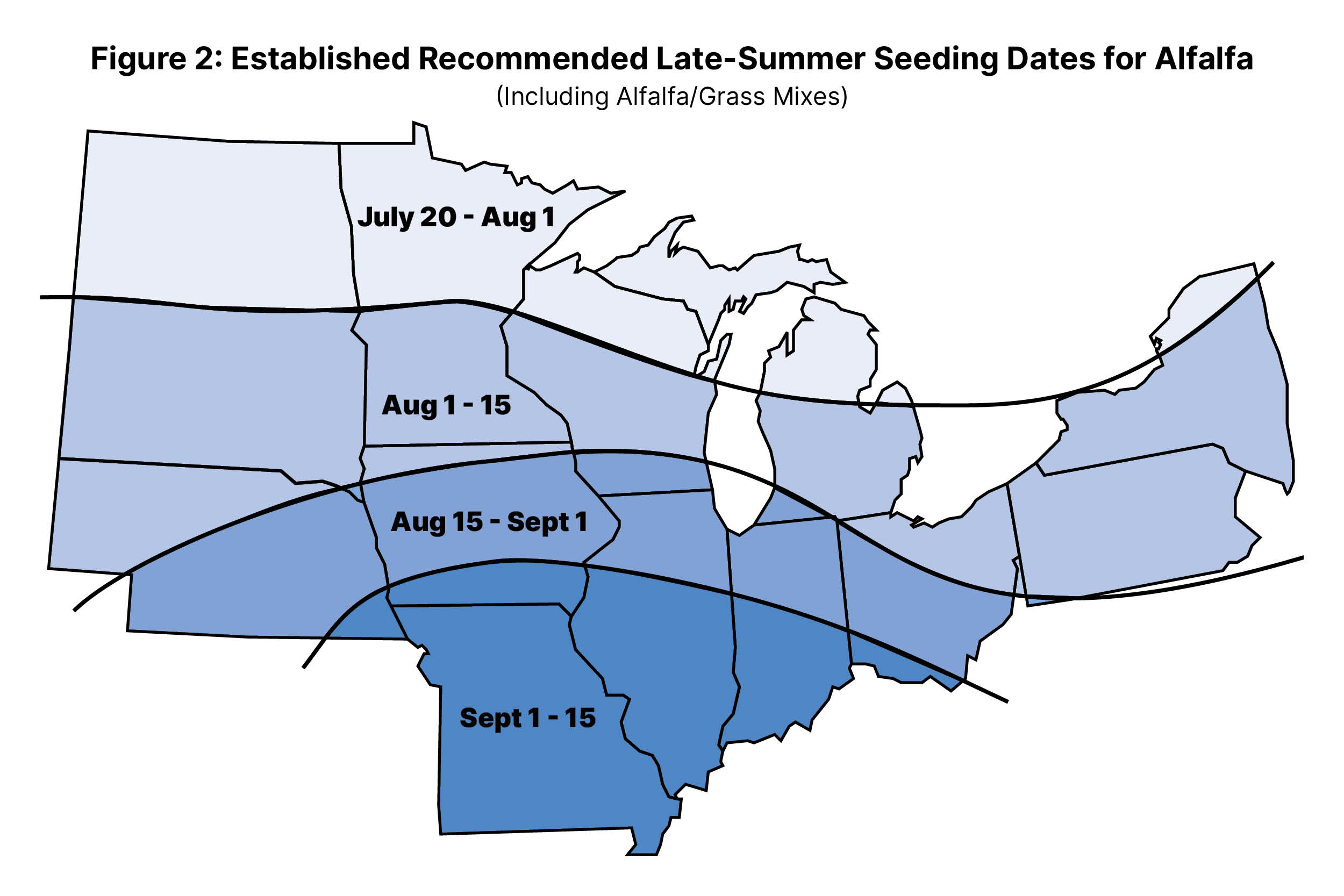
Source: Alfalfa Management Guide, ASA, UW, ISU, UMN
Farmers are often tempted to plant later than these dates. Is that wise? Forage crops should be seeded and emerge in time to allow six to eight weeks of growth before a killing freeze (usually 26o F). Be sure to allow time in this calculation for the crop to emerge.
Changes in Temperature Patterns
Many of the field studies that informed recommended planting dates were conducted in the 1960s though the 1990s. We are faced today with making these planting decisions in a different climate. Weather records document changes with both average earlier spring ‘last-frost’ dates and later fall ‘first-frost’ dates (Fig. 3).
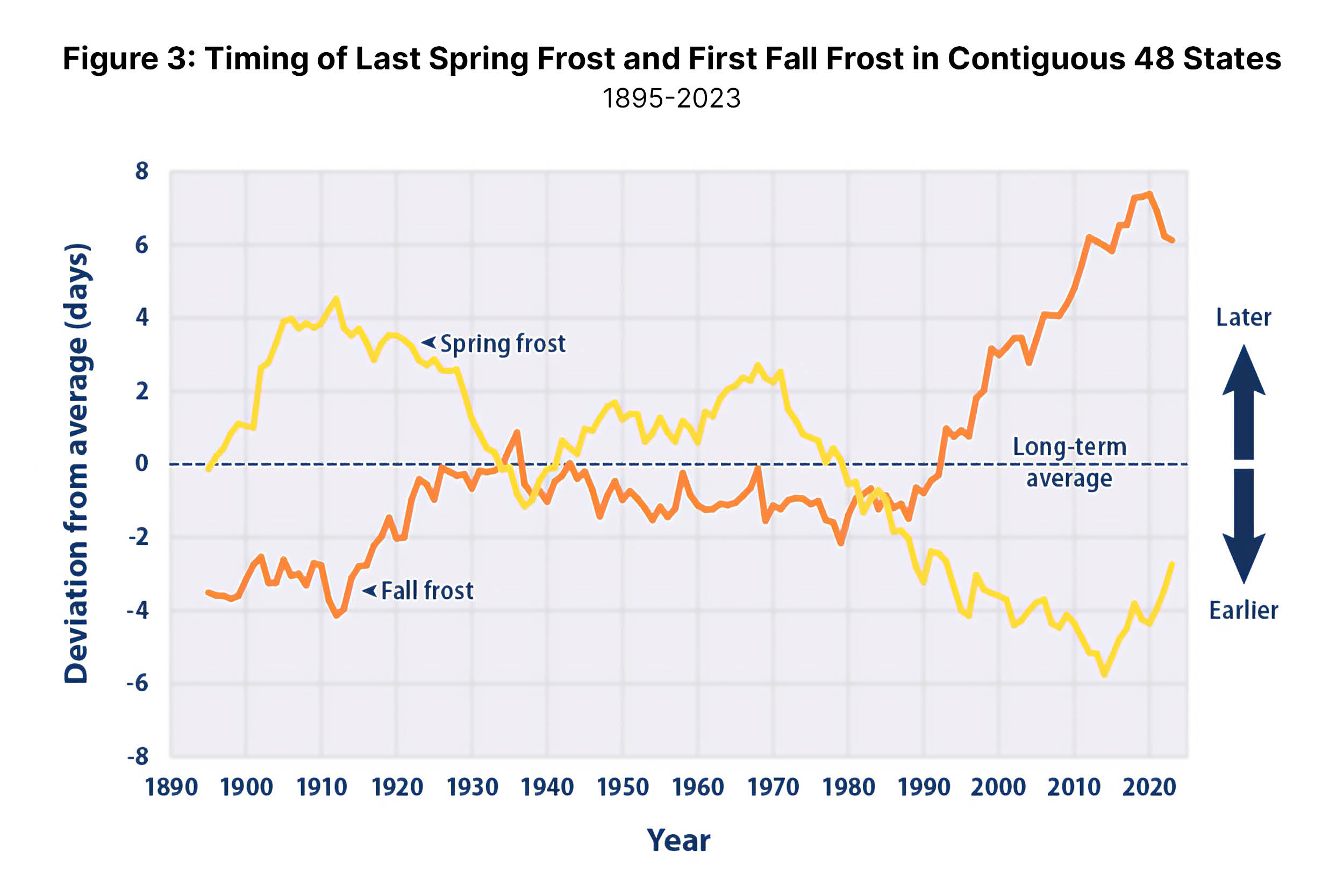
Source: Climate Change Indicators: Length of Growing Season, USEPA
Beginning about 1980, last spring frost dates began occurring earlier than the long-term average dates (note the deviation from average—expressed in days on the vertical axis of the graph). By 2022, the last frost in the spring was 3-5 days earlier than the long-term average.
Important for late-summer seedings are the days to first frost (shown by the orange line on the graph). Beginning about 1990, the first frost in the fall (averaged across the 48 contiguous U.S. states) began occurring later that the long-term average. By 2022, the first frost in the fall was 6-7 days later than the long-term average.
Since these dates are averages for the 48 lower states, clearly, some states have experienced wider variations from the long-term average first frost date and some narrow variations. Much of the Upper Midwest has experienced changes from 2-10 days later than average first frost dates (Fig 4). Other areas, including North Dakota, Ohio, Pennsylvania and New York, have experienced fall frosts 10-20 days later than the long-term average. These ranges seem wide, but microclimate in specific areas also impacts the first frost date, so there are also variations to first frost within states.
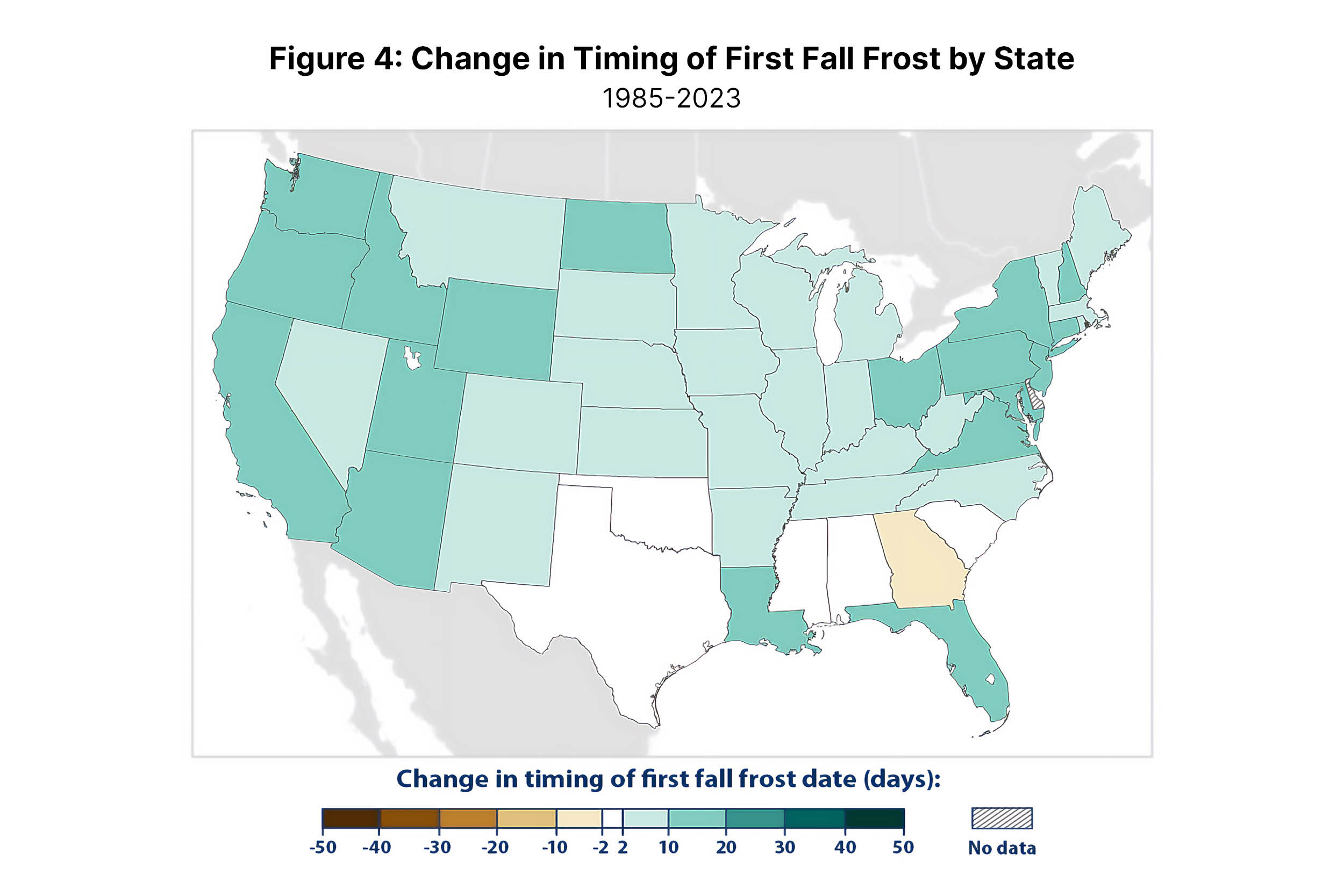
Source: Climate Change Indicators: Length of Growing Season, USEPA
Adjustments to Late-Summer Seeding Dates
Can we reasonably use these weather records to adjust our late summer seeding dates for alfalfa, grass hay and pastures? Rainfall patterns, which can have a large effect on the success of forage seedings, have also changed from the long-term average. There is a need for updated planting-date field experiments to verify if later late-summer seedings are safe.
Even without updated field data available at this time, I think we can make some reasonable assumptions about adjusting late-summer seeding dates. Starting with the dates recommended for your area (Fig. 2 and individual state recommendations), for the Upper Midwest, I think that we can extend those dates by five to seven days later in the late summer. In the Northeast, we can likely extend those planting days by 10 days. Take care in those states with highly variable topography (e.g. Wisconsin, New York, Pennsylvania, etc.); low lying areas are still prone to earlier frost due to cold air settling into valleys and swales.
Soil Moisture Requirements for Late-Summer Seeding
In addition to planting date, one of the biggest factors affecting the success of late-summer forage seedings is soil moisture and predicted rainfall. Never plant into a dry seedbed. A light rain may germinate the seed, but more rainfall will be needed to support young seedlings. You’ll have the best success planting into a moist seedbed and when rain is predicted in the 7- to 10-day forecast.
Additional Information
For additional information about soil fertility, tillage, and alfalfa autotoxicity with fall seedings, see:
- Late Summer Alfalfa Seeding, University of Wisconsin
- Late Summer Hay and Pasture Seedings, Albert Lea Seed
___
Resources:
- Alfalfa Establishment: Management Strategies, University of Minnesota
- Alfalfa Management Guide, American Society of Agronomy
- Climate Change Indicators: Length of Growing Season, USEPA
- Establishing Alfalfa During Late Summer, University of Wisconsin
- Late Summer Hay and Pasture Seedings, Albert Lea Seed
- Late Summer (Fall) Seeding of Forages in Iowa, Iowa State University
- Let the Alfalfa Seeding Begin, Hay and Forage Grower
- Pasture and Forage Minute: Fall Planting Alfalfa and Winter Annual Forages, University of Nebraska
- Seed Alfalfa by Mid-august in Northern Indiana, Purdue University
- Time of Seeding for New Alfalfa Establishment, North Dakota State University
- Tips for Fall Planting of Alfalfa, Kansas State University
